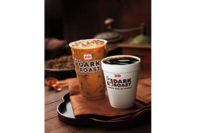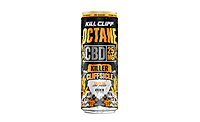Seal the Deal
By JENNIFER ZEGLER
Advancements in beverage closure technology open new opportunities
There’s a good chance that as you read this you have a beverage nearby. Think back to when you opened the beverage. Whether single or multi-serve, you would not have enjoyed the drink if the container was ajar, would you? This partly demonstrates the importance of beverage closures.
Though beverage closures are imperative to the
product, many people do not think of the technology that goes into them.
Recently, companies have launched innovative beverage closures that are
sealing products in high-tech ways. From carbonated soft drinks to wine,
companies are concerned with reduction in materials, advancements in
technology and new secondary packaging options.
Reducing materials
A reduction in the materials used in packaging is not
only good for the environment, but better for a
company’s bottom line. Thus, some companies have launched new
closures that use less material.
New this year, Portola Packaging, Batavia, Ill.,
launched two next generation lightweight, high-performance 5-gallon
closures. Designed for most water cooler bottle finishes, the Easy Fit NS
and PL feature a scalloped edge and optimized height for improved grip.
Both Easy Fit options are one-piece for easy opening and will be available
in the first quarter of 2007.
Specifically designed for carbonated soft drinks,
Alcoa Closure Systems, Indianapolis, introduced the Xtra-Lok mini in
October. The 28-mm., two-part closure reduces material and withstands
carbonation pressure. Xtra-Lok mini extends a trend toward reduced height,
which is popular in water and juice, explains John Grainda, Alcoa’s
marketing manager for CSDs and water.
“The mini closure was designed for performance
requirements, seal integrity and tamper evidence needed for CSDs,”
Grainda explains. “It offers the bottler or filler a significant
packaging savings.”
The short height mini reduces packaging material cost
due to the shorter, lighter cap design that allows for a reduction in PET
bottle finish weight. Though it was designed for CSDs, the Xtra-Lok mini
line can be used for bottled water and malt beverages as well. Grainda says
the company also is developing an option for lighter carbonated water
products.
Another company on the forefront of packaging
reduction is Blackhawk Molding Co. Inc., Addison, Ill., which introduced
two patent-pending innovations. Following Wal-Mart’s announcement to
reduce packaging materials, the company released the Fresh Seal and Fresh
Strip system. Both are ready for use in dairy products. The Fresh Seal
system has a white ringless 38-mm. SuperQuad closure with a color-coded
shrink band over the top of the closure and bottle neck. Its counterpart,
the Fresh Strip system, uses a color-coded adhesive-backed label over the
top and sides of cap instead of the color-coded shrink band. The system,
could help a mid-size dairy save more than 11 tons of packaging material
per year, Blackhawk says.
Advancing technology
Innovation is the key in any packaging arena, but in closures new innovations are creating new product
opportunities. Liquid Health Labs, Harrisville, R.I., is looking forward to
a big year for its Power Cap closure. Power Cap is a bottle top closure
with special cavity and separating tool that hides a trap door through
which liquid or powder ingredients can be released into the beverage. The
cap can add ingredients or interactivity to a beverage.
“PowerCap provides manufacturers and marketers
with the opportunity to deliver product solutions to their
customers,” explains Kenneth E.
Milligan III, vice president of business development for Liquid Health
Labs. “By solutions we mean the ability for Power Cap to securely
house materials apart from the liquid base, which opens up opportunities
for companies to provide products that utilize ingredients, address
specific health conditions and introduce a level of interactivity,
freshness and consumer trust that were either challenging, costly or
unavailable without this delivery system.”
Another advancement in technology combats naturally
occurring issues in cork sealed wine. Trichloroanisole (TCA), commonly
known as “cork taint,” is an airborne fungus that affects the
integrity of 3 to 15 percent of wines. This problem has led some wineries
to seek alternatives to cork closures.
“Because of more awareness of TCA, wineries are
looking for cork alternatives,” says Alcoa’s Grainda.
“From synthetic cork to roll-on enclosures, which Alcoa makes,
wineries need to find an alternative to natural cork.”
Alcoa partnered with Vitro Packaging, a glass packaging company, to create a new alternative closure,
Vino-Seal. The system uses a glass stopper and
proprietary o-ring to hermetically seal wine. The glass finish took two years to develop, says Doug Hesche, vice
president of sales and marketing for Vitro Packaging, Plano, Texas.
“We had to develop a glass finish to allow the
closure to function with the same functionality consumers were used
to,” Hesche explains. “Vino-Seal is an improvement over typical
wine closures. It’s very high-end, specialty and value-added. Our
challenge was to create specifications that will allow it to work, which
took two years.”
In addition to the glass stopper, Vino-Seal includes
an aluminum overcap to enable a secure seal as well as a buffer between the
glass neck finish and easy-to- open stopper. Vino-Seal is widely used in
European wineries and is gaining popularity in the United States, the
company says.
Also popular overseas is the Zork wine closure
developed by Australian company Zork Party Ltd. A cork-free closure, Zork
has aesthetic appeal and provides an oxygen
barrier. Australia’s Zork partnered with Portola Packaging, Batavia,
Ill., to bring the easy to open and re-seal closure to the United States.
Zork is available in a wide variety of colors and can be printed or
de-bossed for added brand identity.
Secondary thoughts
In addition to the
bottle’s graphics, secondary packaging options offer further brand
differentiation. TampoPrint International Corp., Vero Beach, Fla., offers
bottle top decoration technologies, and other companies are creating new
options.
For those concerned with
the hygiene of beverage tops, PakTech and Advercan created new options to
keep the beverage’s lid clean. PakTech, Eugene, Ore., introduced
injection-molded can handles that use a thin layer of HDPE plastic to cover
the product. Dallas-based Advercan developed can covers made from
biodegradable tree pulp that offer a new platform for advertising. The
company’s BioFilm labeling system can be printed with promotion
information or third-party advertisements.
The past year has seen much new advancement in
beverage closures and many companies are looking ahead for new trends.
Alcoa’s Grainda foresees a continued interest in short height
closures as well as a renewed focus on package security.
“Another trend that’s receiving a lot more
discussion is improved packaging security and tamper evidence,” he
says. “We want to meet those challenges in packaging security in 2007
and beyond.”
Vitro Packaging sees more high-end closures and
nostalgic closures on the way. Hesche says products such as Diageo’s
Crown Royal XR are leading the way for high-end
spirits with similarly high-end closures.


